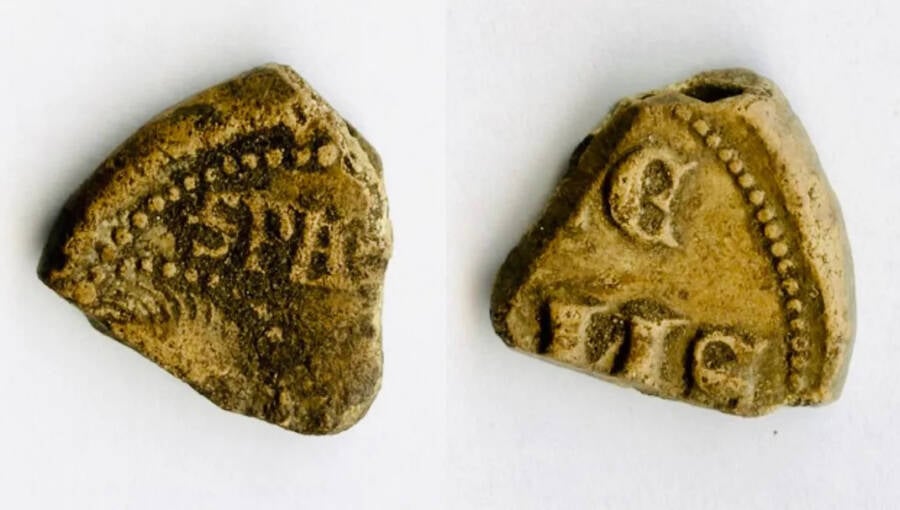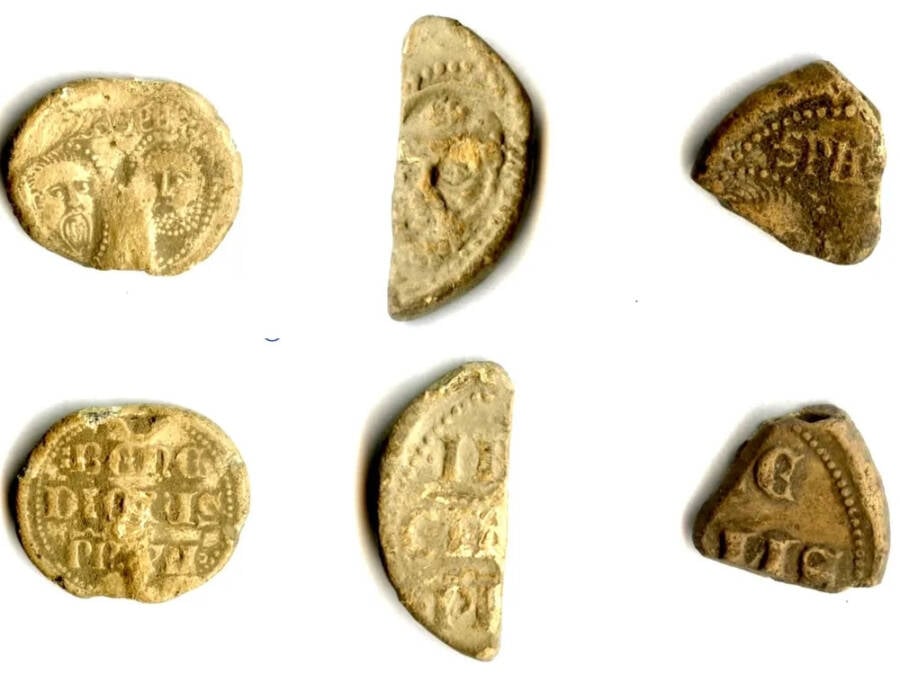Jacek Ukowski discovered the fragmented remains of a 14th-century papal bull in Wysoka Kamieńska, Poland — but no one knows how it got there.

Museum of the History of the Kamień LandBroken pieces of the 14th-century papal seal.
A Polish metal detectorist recently discovered the broken pieces of a 14th-century papal seal. The seal is one of three papal bulls ever found in the West Pomeranian province, making it an incredibly rare discovery.
Now, historians believe that it could have belonged to one of four different popes who reigned between 1303 and 1352: Benedict XI, Clement V, Benedict XII, or Clement VI.
Jacek Ukowski Happens Upon The Papal Seal

Museum of the History of the Kamień LandJacek Ukowski poses with the broken seal where he initially discovered it.
On Jan. 12, 2024, metal detectorist Jacek Ukowski discovered the fragments of the papal seal near railroad tracks in the town of Wysoka Kamieńska.
According to Ukowski, he was looking for artifacts from World War II when he stumbled upon the seal. He later donated the finding to the Museum of the History of the Kamień Land.
In a Facebook post, the museum confirmed that the finding was part of a papal bull — a decree issued by a pope during his reign. Many of these bulls featured metal seals, making them discoverable by metal detectors.
This seal was highly fragmented, making it difficult for researchers to positively identify its origin. On one side of the seal, researchers observed the letters “NE” and “US.” Below these were the letters “PP,” an abbreviation for Pastor Pastorum, followed by a Roman numeral.
Based on the letters and numerals evident on the seal, researchers have pinpointed four possible popes who might have used it: Benedict XI (1303-1304), Clement V (1305-1314), Benedict XII (1334-1342), and Clement VI (1342-1352).
This would place the seal’s origins sometime between 1303 and 1352.
The Mystery Of How The Papal Seal Got There

Museum of the History of the Kamień LandVarious papal seals uncovered in Poland.
Researchers have discovered more than a dozen of these papal bulls in Poland. Ukowski, who found another seal earlier this year, is now responsible for two of these discoveries.
Typically, papal seals turn up at sites of historical importance, like castles, tombs, and abbeys. So it’s highly unusual that Ukowski discovered this one in a fairly remote area near a railroad track.
“One can only guess how this fragment of the bull ended up in the place where it was discovered by Mr. Jacek,” the museum stated in their Facebook post.
Current theories include that an unknown individual lost the seal and accidentally dropped it at the site, or that workers unknowingly transplanted it there during a construction project.
The most interesting theory is that the bull was destroyed while en route to its recipient. Only about seven miles away from the site sits the town of Golczewo. During the 14th century, the town’s castle was home to Kamień bishops. It’s possible that the bull was lost on its way to these men.
“This will probably be another unsolved mystery for us,” the museum stated. “We will probably never find an answer to it. All the more so because the bulla has survived only in a fragment.”
Despite not having the complete picture, the museum is proud to house its third papal seal. Also on display is a complete one found in 2020 from Pope Benedict XII (1334-1342). The second seal, a fragment, may belong to Pope Innocent VIII (1484-1492).
After reading about the broken Papal seal, discover the raunchy story of Pope Alexander VI, who hosted orgies and had multiple mistresses. Then, dive into Pope Gregory IX’s war on cats.





